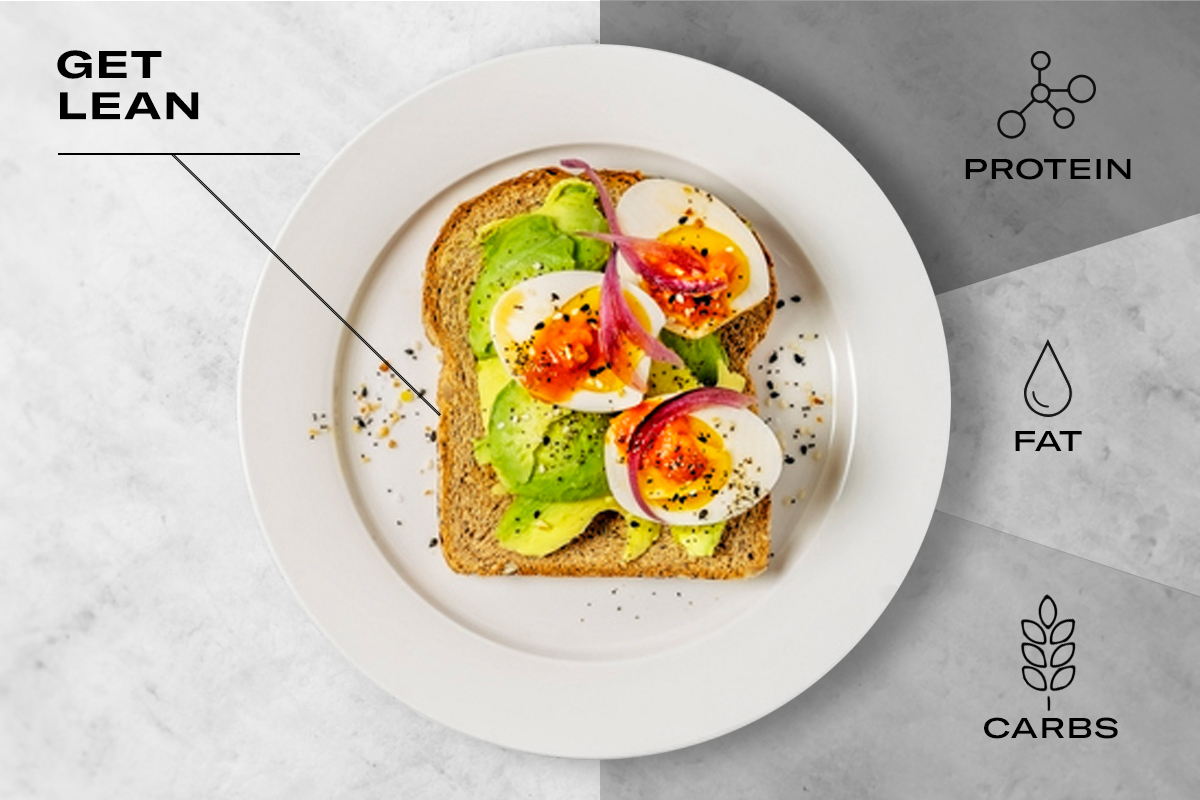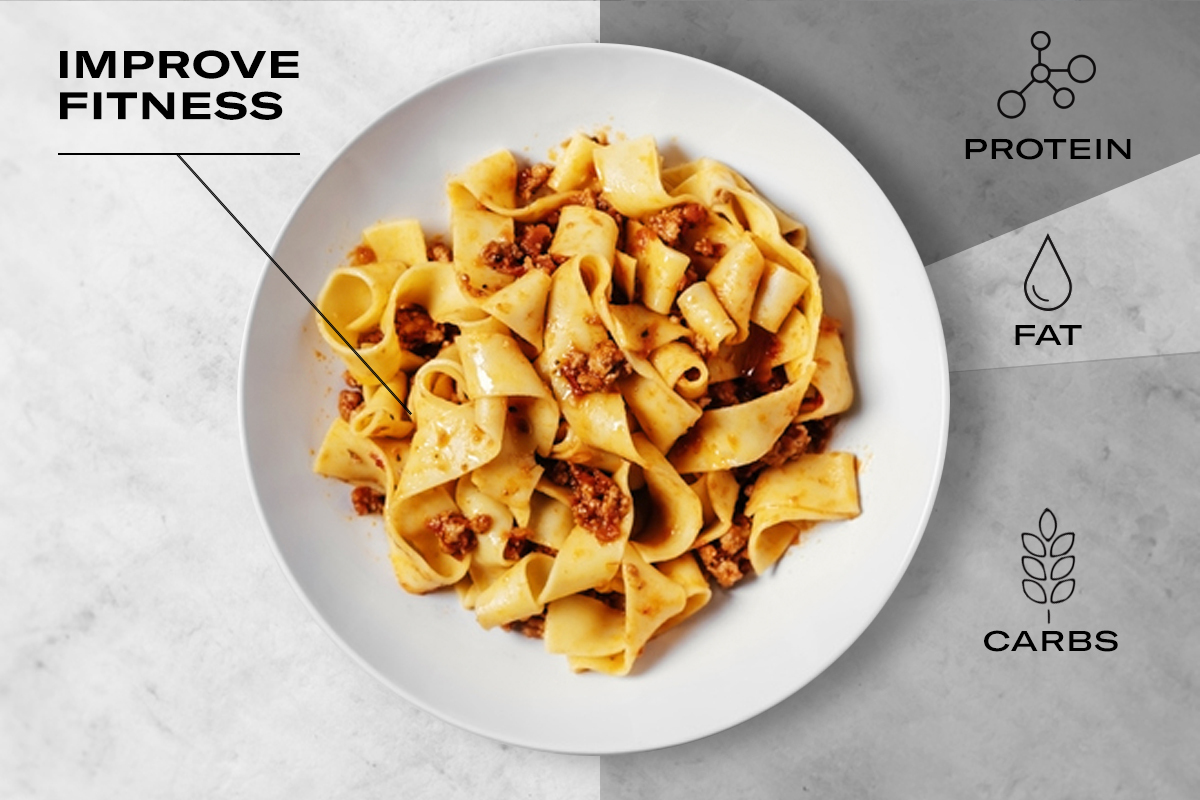Counting macros doesn’t work for everyone, but if you’ve been tracking-curious, here’s what you need to know.

Some of us love to keep our own stats. We track our reps and sets and count our steps, calories, and hours of sleep. That works for some, and for others, not so much. When it comes to planning, especially nutrition, the best strategy is the one that you can maintain long-term and that doesn’t spike anxiety or tank your relationship with food.
If tracking or counting works for you, great. Counting macronutrients (or macros) is a method that’s been used by many from pro athletes to bodybuilders to recreational athletes looking to track their diets for decades. But before you download a tracking app or start scribbling in a food log, it’s important to understand how macros work in the body and what ratio is best to support your individual goals.
What Are Macronutrients?
Macros are the three categories of nutrients, carbohydrates, protein, and fat, your body needs in large quantities to function. Micronutrients, on the other hand, are the nutrients like vitamins and minerals you need in smaller quantities.
“Macronutrients will give you energy, whereas micronutrients will aid in energy-yielding reactions,” says sports dietitian Marni Sumbal, MS, RD, author of Essential Sports Nutrition. Sumbal stresses that if you choose a wide selection of wholesome macronutrients, it is likely that you will receive a variety of micronutrients as well, which is good for your overall health.
Each macro plays a different, unique, and important role in the body. Here’s a basic breakdown:
Carbohydrates
Despite the hype around low-carb diets, the fact is, carbs are a necessity. “Carbohydrates break down into glucose (sugar) that you can use right away for energy or your body stores it in the liver and muscles for future energy needs,” Sumbal explains. There are three primary kinds of carbs: sugars, starches, and fibers.
Dietary fiber is generally the indigestible part of plant material and is important for digestive health and regulating body weight. Starches (like those found in vegetables and grains) and sugars (like those in fruits and sweets) provide your working muscles and your brain with the energy they need to properly function.
One gram of carbohydrate contains 4 calories
Protein
Think of protein as a foundational building block for your body’s cells and tissues including your muscles, skin, hair, and bones. You need it for proper recovery from exercise and to maintain and build lean body mass. “It also makes up the enzymes that support many chemical reactions inside the body,” Sumbal says. Protein is made up of 20 different amino acids, including nine essential amino acids. Those essential amino acids cannot be produced by your body so they need to come from natural food sources.
One gram of protein contains 4 calories
Fat
Fat is made up of cell membranes and helps protect your bones and organs. Consider it a primary source of energy during those lower-intensity exercise sessions. Fat promotes nerve and brain health and increases the absorption of fat-soluble vitamins such as vitamin D. The main kinds of fat you’ll eat are saturated and unsaturated (monounsaturated and polyunsaturated). While we need all of these in our diet for good health, research suggests we should emphasize unsaturated fats with more modest intakes of saturated fats.
One gram of fat contains 9 calories
While many foods contain a mixture of macros, most foods—especially whole foods—skew heavily toward one or two macronutrient categories. For example, chicken is predominantly protein; bread is mostly carbohydrates; olive oil is all fat. It can be easy to heroize one macro and vilify another, but for most people, each one is a necessary part of a diet geared toward improving body composition and promoting good health.
What Are the Benefits of Tracking Macros?
The tricky part about tracking or counting macros is finding the amount of each macro category to consume. It comes down to gaming the numbers for your unique health or fitness goals, whether that’s weight loss or improved athletic performance. But once you find the numbers to aim for, your determined amount is called your “macronutrient ratio.” This detailed attention to food intake helps you understand exactly where your calories come from and what impact they have on your body.
“Monitoring macros can ensure that you are eating enough, not just calories but the right combination of food,” Sumbal says. “Instead of just focusing on how many calories are in a meal, you can plan a meal based on what you are actually eating in the meal. You can also look for healthier options within each macro category to get the most out of the food you eat.”
Most experts agree that if you’re someone who likes to track your diet and can maintain a healthy relationship with food while doing so, shifting the focus from counting calories to counting macros can help you create more meaningful changes.
Okay, So How Many Macros Do I Need?
There isn’t one right answer to what a macro intake should look like everyone. But we do have some ideas of what works best based on the individual characteristics of each macro.
No matter your goals, you can start with your protein intake. Research suggests athletes should aim for 1.2 to 1.6 grams of protein per kilogram of bodyweight as your baseline. Remember to start slow and build to that 1.6-gram recommendation to give your body an opportunity to adjust to the increase.
A higher protein diet can be an effective and safe way to achieve and maintain a healthier body composition, according to research. “Protein can also help with satiety hormones, making you feel more satisfied for longer,” says Sumbal.
From there, you can adjust your macros to suit your goals and support your personal activity levels. Carbohydrates are going to be necessary to sustain your workouts while the right amount of fat can provide enough calories to support muscle-building or fuel your lower intensity workouts.

For example, if you’re aiming to get lean by reducing body fat and maintaining muscle mass, you’ll want to prioritize protein, and you might consider a small calorie deficit. Research shows higher levels of protein intake, even within a calorie deficit, can be better for reducing body fat percentage. Other research also suggests that extra protein makes it easier to hold on to your muscle mass when eating and exercising to get lean. But because fat is so calorie-dense, it’s important to make it a modest contributor to your macro ratio if your goal is getting lean.

The same goes for building muscle: Protein is important. If you want to pack on muscle, you might dial up the protein and consider a calorie surplus so you might skew your fat and carbs intake up, too. While you increase calorie intake to build muscle mass, be sure to include all of your nutrient-dense fiber-packed fruits, vegetables, grains, nuts, and healthy fats.

When your goal is to improve fitness, maybe you maintain your protein ratio to support recovery but skew your carbs up a little and dial fat down. Carbs are going to be key to keeping up your energy levels to crush your workouts.
Keep in mind these are rough general guidelines. Nutrition and tracking marcos is unique to each individual so you may consider working with a nutrition expert to personalize your approach.
While each macronutrient, especially fat and carbs, has been vilified by at least one diet at some point, most nutrition experts recommend avoiding extremes on the macro scales and shooting for more sustainable ranges. The ultimate goal is not to deprive your body, but to feed it the ideal amount of macros that make your body more efficient.
How to Track Your Macros
Tracking allows you to see if you’re achieving the right nutritional balance to optimize your plan. Now that you have a baseline for setting your marco ratio for your unique goals, let’s do some math to determine the number of marcos for your diet. We’ll use the ratio for strength-building as an example. Here are three basic steps:
1. Figure out your calorie needs.
Your caloric needs depend on your age, size, sex, and activity level, as well as your body weight goals. Use a calculator that will account for all these variables such as the National Institutes of Health’s Body Weight Planner.
2. Do the math.
Once you’ve got your calorie count, you can use your macro ratio to determine how many grams of protein, fat, and carbs to eat each day. Here’s where the math comes in.
Let’s say you have determined that you have a 2,300 calorie-per-day goal aimed to develop more muscle and support your training load. You’ll want to consume 55 percent of those calories from carbs, 25 percent from protein, and 20 percent from fat.
55 percent carbohydrates: 2,300 calories/day x 0.55 (or 55%) = 1,265 calories/day. Divide 1,265 by 4 grams to determine you need 316 grams of carbs daily.
25 percent protein: 2,300 calories/day x 0.25 (or 25%) = 575 calories/day. Divide 575 calories by 4 grams to determine you need 144 grams of protein daily.
20 percent fat: 2,300 calories/day x 0.20 (or 20%) = 460 calories/day. Divide 460 calories by 9 grams to determine you need 51 grams of fat daily.
3. Track your progress.
Once you know how much of each macro you need, you’ll have to keep track of the amounts that you’re getting from meals and snacks. The easiest way to keep on top of all those macros in the foods you eat is with an app that allows you to input your food intake, then it does the math for you.
MyFitnessPal, MyPlate, or Lose It!, are the three highest-rated apps in the Apple or Google Play stores. Or you can go old school and jot your calculations down by hand in a journal or notebook. The U.S. Department of Agriculture has an expansive database of foods and the macros they contain.
How To Determine Your Macronutrient Ratio For Your Goals
Remember, there is no one-size-fits-all solution. Determining your macro ratio is married to your health and fitness goal. Here’s a per-goal baseline ratio recommendation from Sumbal:
Getting Lean:
50% carbs
30% protein
20% fat
Building Strength:
55% carbs
25 to 30% protein
15 to 20% fat
Improving Fitness:
55 to 60% carbs
20 to 25% protein
20 to 25% fat
“Depending on activity level, current body composition (ex. lean vs. fat mass), sex, age and genetics, some individuals respond differently to macro ratios, finding the right balance is key to maximizing your fitness gains,” notes Sumbal.
For instance, if you’re struggling to keep up with your workouts you may need to bump up your carbohydrate intake for a little bit of extra energy. Or perhaps you just need to eat a bit more of all the macros to increase your calorie intake and support your training. A bump up in your protein ratio could help out if you are not maintaining lean body mass or find yourself always hungry or always sore. In the end, you might be better off with a slightly different breakdown.
Hitting your macros doesn’t have to feel like you’re cramming for final exams. In fact, you’ll learn more about what works for you personally, and you can have some fun finding different ways to hit your numbers. Just remember that you’re the one driving the bus on your fitness journey. Nutrition is personal. But now you have a framework to do what works for you.